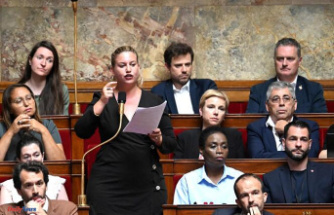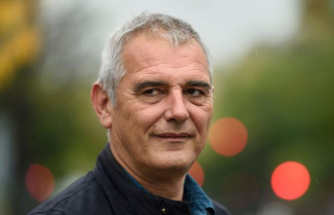It was in the spring of 1999, when I was writing Cocteau's biography (Gallimard, 2003), that I had the chance to meet Françoise Gilot in her Parisian studio on Avenue Junot (18th arrondissement). Living mostly in the United States, Picasso's ex-girlfriend was approaching 80, but was still strikingly beautiful.
Still just as active, she had taken a whole day to tell me about the very affectionate relationship she had had with Cocteau – the only one of Picasso's friends who had not rejected her after their separation. And I had been able to measure this luminous intelligence which had struck Picasso during the war, in 1943 to be precise, when he had begun to frequent her, after having crossed her by chance at the Catalan.
She was 21 then, he was forty older. She earned her living by giving riding lessons and began to paint, with her friend Geneviève: he immediately went to the gallery exhibiting the two young women and approved. Gilot admires Picasso's work, but she places him a little lower than Bonnard or Matisse. The Spaniard forbids him to go to the studio of the first and presents him in exchange for the second, who sketches his portrait.
He has only one idea: to make her his companion as he walks away from Dora Maar. She balks, like a real Amazon. He gets carried away, nobody usually says no to him, but she has character, to the point of having fallen out with her father, a Parisian bourgeois demanding that she pursue her law.
Abandoning Dora Maar, "the weeping woman", Picasso made her "the flower-woman" of all his paintings. He acts so well that she agrees, in 1946, to live with him, without having too many illusions about the difficulties that await her - "You mean no more to me than this dust" he warned her. upon his arrival in the studio in the rue des Grands-Augustins.
They settled in Vallauris, near Golfe-Juan (Alpes-Maritimes). Two children are born: Claude (1947) and Paloma (1949). They each work in their studio, in staggered parallel, up to twelve hours a day. She who thought of joining a group of painters led by Nicolas de Staël is getting closer to her way of painting – Dora experienced the same contamination.
Determined not to become "Bluebeard's 7th wife", she is all the more careful to keep her independence. She is reluctant to pose for him, for fear of becoming his "thing" and ending up in bloody lint, like the others. Her resistance exacerbates the Spaniard's libido dominandi, who renames her "the woman who says no". Does he get revenge by cheating on her? She becomes the mistress of a young painter, Luc Simon: tooth for tooth...
Until that day in 1964 when Living with Picasso was published, a book co-written with an art critic in which she recounts their exhilarating encounter, their difficult daily life, the voracious and melancholic nature of a painter whom nothing satisfied. It's a huge scandal and a huge success (16 translations, one million copies sold).
From Aragon to Leiris, the whole of Paris is petitioning to ban a book that anticipates the feminist rereading that Picasso now undergoes, but with an aesthetic intelligence that is sometimes lacking in it, and that Gilot confirms by publishing, in 1991, Matisse and Picasso.
While she thought she was hated by the French, François Gilot finally benefited, like Dora Maar, from personal exhibitions in France: in Nîmes in 2004 then in 2012, under the direction of Annie Maillis, and in 2021 at the Estrine museum in Saint-Remy-de-Provence.
The same year, one of his paintings sold for 1.3 million dollars (1.2 million euros) by Sotheby's. She just died at 101, the start of a second life, no doubt about it. Far from the shadow of a painter whom she refused to reduce to a simple rapist, without hiding anything of his monstrosity.
To have
To read












